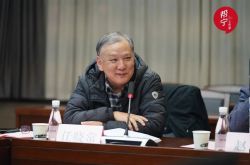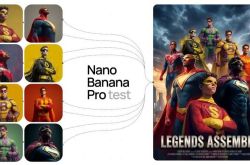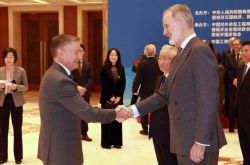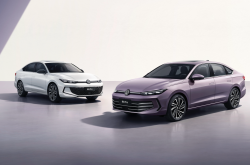JAC "Bids Farewell" to Its Own Brands and Fully Commits to Zunjie!
![]() 11/26 2025
11/26 2025
![]() 351
351
Written by Wang Xin, Edited by Yang Lingxiao, Produced by Electric New Species
The Chinese automotive market in 2025 has undergone an industry-wide transformation, largely due to the strategic moves of JAC Motors. This automaker, originally rooted in commercial vehicles, is now experiencing an unprecedented integration of resources.
Within JAC, the phrase that resonates most frequently these days is, "Everything for Zunjie, for the sake of Zunjie's success." This is not merely a catchy slogan but a testament to the company's concrete actions.
JAC has seamlessly merged the R&D and marketing efforts of its heavy-duty trucks into its light-duty truck division. Its proprietary passenger car brand, Yiwei, has been temporarily suspended. Although the Sihao and Ruifeng brands remain in production, they are unlikely to receive further investments in terms of resources. These brands, once the darlings of JAC's portfolio, are now making way for a new star—Zunjie.
Zunjie, an ultra-luxury automotive brand born out of the collaboration between JAC and Huawei, has made waves since the launch of its first model, the S800, this year. The market's response has far exceeded expectations.
JAC has now clearly charted its next course, with Zunjie poised to introduce six new models next year, spanning various categories like SUVs and MPVs. This is not just a routine product expansion but a strategic gamble where JAC has bet everything.
In the fiercely competitive new energy vehicle market, JAC's decision is both surprising and understandable. Through its actions, JAC underscores that, in the race for high-end transformation, concentrating resources is crucial to seize opportunities.
01 Why Zunjie?
To comprehend why JAC made such a decisive move, we must first delve into the achievements of the Zunjie S800.
Previously, the ultra-luxury sedan market for vehicles priced over 700,000 yuan was the exclusive domain of Mercedes-Benz, BMW, Audi, and Porsche. It seemed almost impossible for domestic automotive brands to break into this elite segment. However, the Zunjie S800 has done just that—and it has firmly established its presence.
According to sales statistics from various tech and automotive bloggers, the Zunjie S800 sold nearly 2,000 units in September, topping the charts in this premium market segment.
More critically, the Zunjie S800 has garnered recognition from the most discerning users. User profiles reveal that the majority of S800 buyers are affluent males aged between 40 and 50.
Many of them previously drove luxury vehicles like Rolls-Royce, Maybach, and Porsche. Their choice of the Zunjie S800 was not driven by price but by the intelligent experience and the new identity symbol it represents.
Reports indicate that over 70% of users opted for features like the rear privacy screen and smart interaction system, while over 60% chose the handcrafted smart starry sky roof. This underscores that the technological sophistication and exclusivity offered by the vehicle truly resonated with these well-informed consumers.
The success of the Zunjie S800 has instilled tremendous confidence in JAC. On one hand, there is market confidence. The acceptance of a million-yuan domestic vehicle in the market proves that this high-end route is feasible.
On the other hand, there is financial confidence. With 18,000 confirmed orders (excluding cancellations), JAC is expected to generate vehicle sales revenue exceeding 12 billion yuan. For JAC, which is currently operating at a loss, this is akin to receiving a much-needed lifeline.
Therefore, while JAC's decision may seem radical, it is firmly rooted in logic.
When your own "proprietary brands" (self-owned brands) have been unable to generate profits for an extended period, and a "foster brand" (partnered brand) demonstrates significant profit potential and brand growth, allocating resources to the more promising and future-oriented option is a tough but realistic choice.
02 JAC's All-or-Nothing Gamble
The slogan "Everything for Zunjie, for the sake of Zunjie's success" is not just empty rhetoric within JAC. It signifies a profound and transformative shift.
The first area to be impacted is JAC's traditional passenger car business. According to an exclusive report by 36Kr, JAC has suspended its passenger car brand, "Yiwei." While the production lines for the other two passenger car brands, "Sihao" and "Ruifeng," remain operational, the company is unlikely to invest new resources in them.
This effectively means abandoning sustained competition in the mainstream passenger car market and temporarily shelving years of accumulated experience.
More surprisingly, even JAC's long-standing commercial vehicle business, which has been its bedrock, has made concessions. JAC has integrated the R&D and marketing of heavy-duty trucks into its light-duty truck operations.
We know that commercial vehicles, especially light-duty trucks, have been the primary sources of sales and profit for JAC.
Disrupting this business model indicates that, to ensure the R&D and delivery of Zunjie, JAC is mobilizing its core resources across the company, showcasing its immense determination.
Behind this resource concentration lies immense pressure and urgent expectations. The Zunjie brand plans to launch six new models next year, an exceptionally demanding task. Every aspect—from R&D, design, production, and supply chain management to quality control and marketing channel construction—requires substantial human and material resources.
If JAC continues to disperse its resources across various brands and business lines as before, Zunjie's rapid product advancement plan is unlikely to materialize.
Therefore, JAC's "major integration" can be viewed as a strategic "focus." It has pruned excess branches and concentrated all nutrients to ensure the growth of Zunjie, the seedling that currently appears most promising to become a towering tree.
This is a gamble with no retreat. If successful, JAC will transform into a high-end smart electric vehicle manufacturer with the help of Zunjie. If unsuccessful, it risks losing both its traditional strongholds and future opportunities.
03 Zunjie Expects to Launch Six Models Next Year
With JAC's full support, the Zunjie brand is poised for a significant product explosion next year. Based on available information, in addition to the existing Zunjie S800, the brand is expected to launch six new models next year, with a highly strategic layout.
In terms of product types, the lineup will expand from sedans to include SUVs and MPVs, catering to the diverse needs of high-end users.
Regarding version configurations, each model will offer standard and long-wheelbase variants. For instance, the MPV will feature a standard-wheelbase version for home use and a long-wheelbase version as a commercial flagship.
A similar approach will be applied to the SUV, with the long-wheelbase version establishing a higher brand image and the short-wheelbase version focusing on volume sales to attract a broader customer base.
Additionally, a high-definition version of the existing S800 will be introduced through limited customization, further enhancing the brand's sense of luxury and exclusivity.
The purpose of this comprehensive strategy is clear: rapidly complete the product lineup, cover as many niche demands as possible in the ultra-luxury market, and thereby capture a larger market share.
Judging by the current momentum of the Zunjie S800, the market recognizes ultra-luxury products empowered by Huawei's technology. Therefore, Zunjie has the confidence to pursue such rapid expansion.
However, significant opportunities come with equally apparent challenges.
The first challenge arises internally. Zunjie is not the only brand in the Harmony Intelligent Mobility Alliance family. There are also brands like Aito, Luxeed, and Stelato.
With the launch of the Zunjie SUV, if its positioning is lower than the S800 but still high-end, it may divert some potential customers who were considering the Aito M9.
Similarly, the Luxeed brand plans to introduce a high-end SUV next year, and the Stelato brand may launch a flagship MPV.
Avoiding internal conflicts among these brands under the Harmony Intelligent Mobility Alliance and preventing resource wastage will significantly test Huawei's product planning and resource coordination capabilities.
The second challenge comes from external competitors. Every market segment Zunjie enters is fiercely contested. Its MPV will directly compete with established rivals like the Li Auto MEGA, Zeekr 009, and even the Toyota Alphard. Its SUV must break through the encirclement of numerous traditional luxury brands.
Whether the market will continue to support a nascent ultra-luxury brand, especially as it begins to launch a large number of models, remains uncertain.
Summary: A Bold Gamble and JAC's Future
JAC Motors' decision to "bid farewell to its proprietary brands and concentrate resources on Zunjie" marks a significant event in the Chinese automotive industry's period of deep integration.
It tells us that, in today's increasingly competitive landscape, automakers can no longer afford to "cast a wide net" as in the past. Instead, they must "focus on key areas" and invest their limited resources in the most competitive sectors.
For JAC, Zunjie is not just a collaborative project with Huawei; it represents the company's future destiny. By suspending its proprietary passenger car brands and integrating commercial vehicle resources, JAC has demonstrated its determination to go all in on Zunjie.
Zunjie, in turn, has initially proven its potential to compete with foreign brands in the ultra-luxury market through the market success of the S800.
The six new models planned for next year represent a crucial step for Zunjie to transition from a "single-point breakthrough" to a "comprehensive offensive." If successful, JAC will completely reverse its current financial difficulties and emerge as a significant player in the high-end smart electric vehicle sector.
However, Zunjie must also face severe tests, including internal competition among sibling brands and external pressure from strong competitors.
At the heart of this story is the transformation and struggle of traditional automakers amid the wave of intelligence and electrification. JAC's choice is extreme but highly realistic.
It serves as a mirror, reflecting the anxiety and hope of the entire industry. Ultimately, the market will provide the answer, but this bold, all-or-nothing courage has already rewritten the rules of the game.







